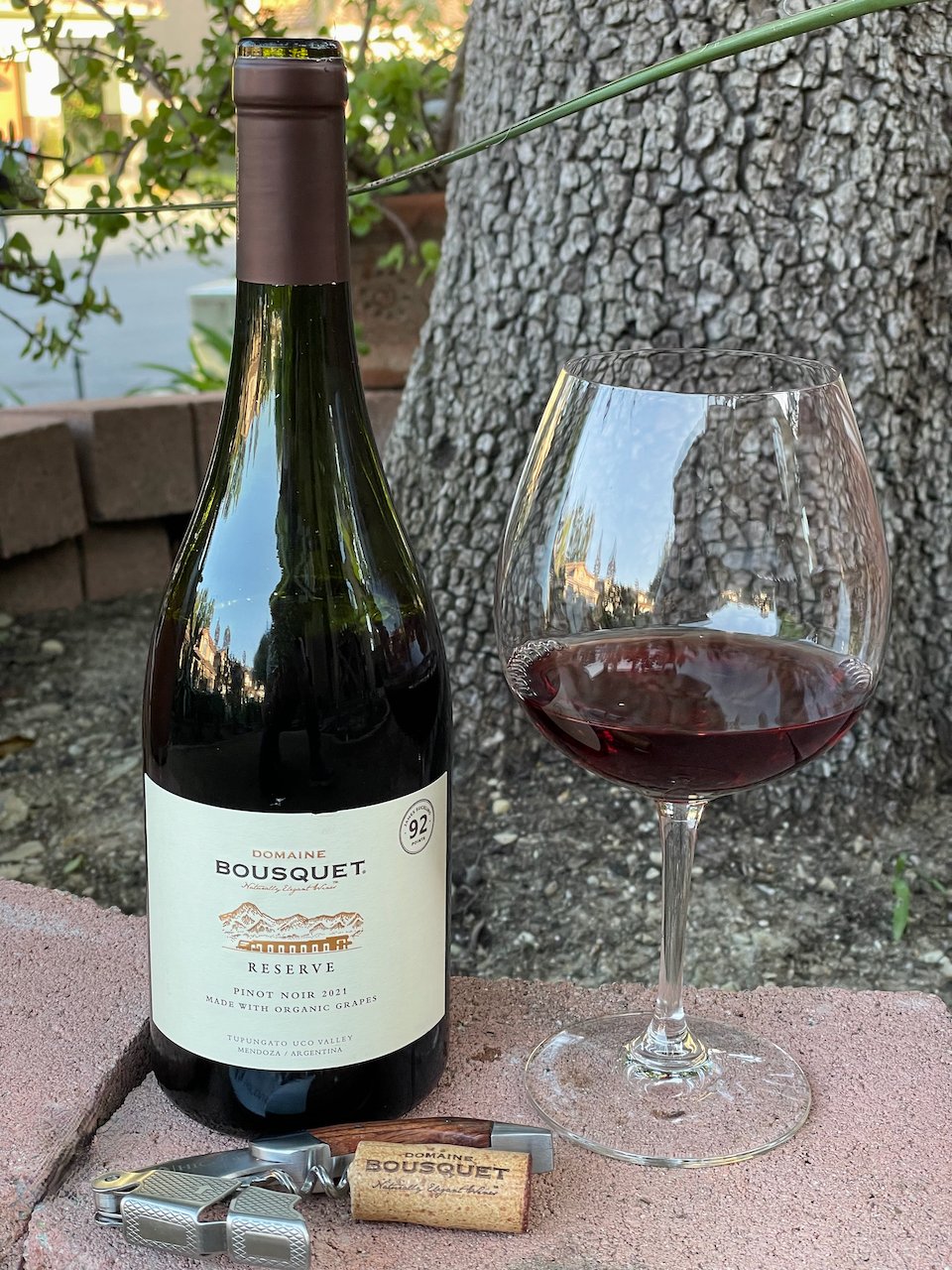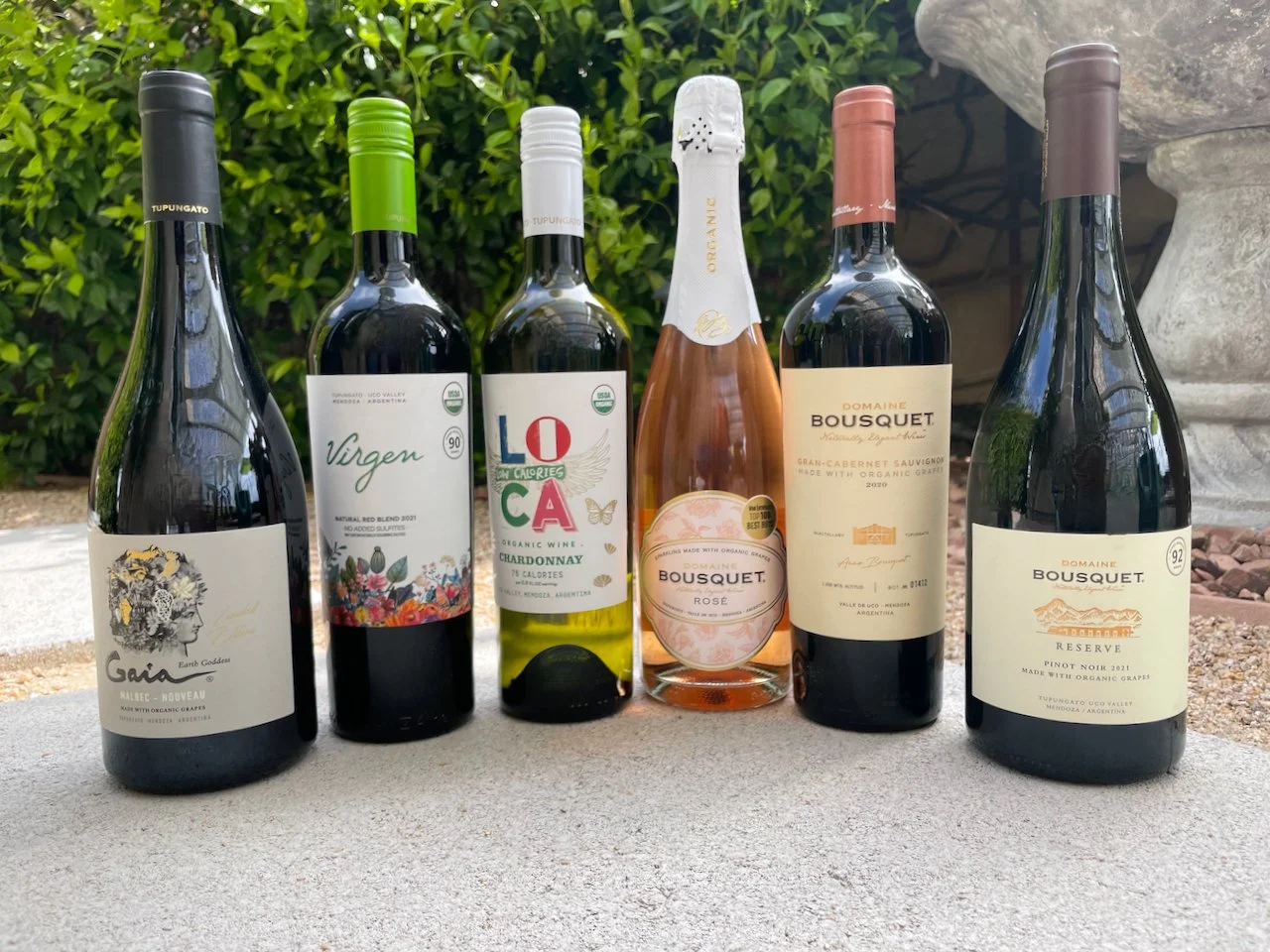2021 Domaine Bousquet Reserve Pinot Noir ($18)
A step up from their premium varietal line, this ‘Reserve’ Domaine Bousquet Pinot Noir is produced from estate-grown grapes from plots with low yields that offer more of everything – more body, more tannin, and more flavor. The 4,000-foot elevation ensures that, with the right handling, this Reserve Pinot Noir exudes an Old-World elegance prized by wine lovers.
Domaine Bousquet’s Reserve Pinot Noir is made from 100% Pinot Noir grapes that are manual harvested, undergo cold maceration and then fermented for 15 days. It is then aged for six to eight months in French oak.
This wine is pale ruby in color with subtle red-fruit aromas. It has the characteristic Pinot Noir flavors of raspberry and cranberry with a bit of black cherry and a round finish.
This wine was produced from organic grapes and is vegan friendly. And, at this price, is an exceptional value for a Pinot Noir of this quality. That makes it a great fit as this week’s Behind the Cork™ Wine of the Week! Cheers!
Disclosure of Wine Sample Submission: I received this sample at no cost for review. The opinions expressed are entirely my own.
Sample Provided by Domaine Bousquet (via Creative Palate Communications)






